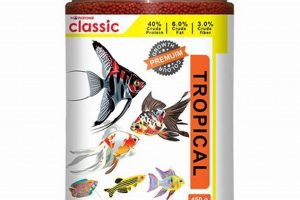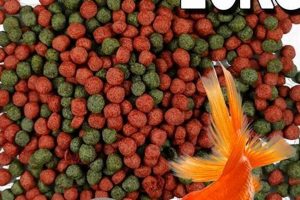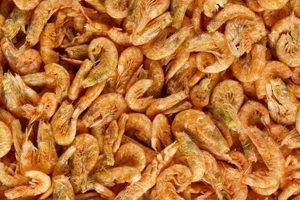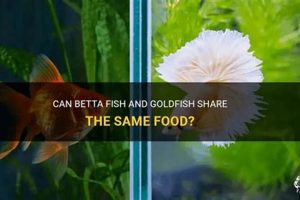Dietary provisions for plecostomus, often termed algae eaters, encompass a range of sustenance designed to meet their nutritional requirements. These provisions are crucial for maintaining the health and vitality of these bottom-dwelling fish, which are commonly kept in home aquariums. Examples include algae wafers, vegetable-based pellets, and supplemental fresh vegetables.
Appropriate nourishment is paramount for the well-being of plecostomus, contributing to their growth, immune system function, and overall longevity. Historically, aquarists often relied on the assumption that these fish would subsist solely on algae within the tank. However, this is often insufficient, necessitating the supplementation of their diet to prevent malnutrition and related health issues.
Therefore, a balanced dietary regimen that incorporates both commercially prepared and fresh food sources is essential. The following sections will delve into the specific types of nourishment, optimal feeding practices, and potential challenges associated with maintaining a healthy diet for plecostomus.
Dietary Recommendations for Plecostomus Well-being
Optimal care of plecostomus necessitates adherence to specific dietary guidelines. Consistent application of these recommendations contributes significantly to the health and longevity of these fish.
Tip 1: Prioritize algae wafers formulated specifically for bottom-feeding fish. These wafers provide a concentrated source of essential nutrients and encourage natural foraging behavior.
Tip 2: Supplement the diet with fresh vegetables such as zucchini, cucumber, and blanched spinach. Introduce these vegetables in moderation to prevent water quality degradation.
Tip 3: Observe feeding behavior closely. Uneaten sustenance should be promptly removed to mitigate the risk of ammonia spikes and bacterial blooms within the aquarium.
Tip 4: Consider the size and age of the plecostomus. Younger fish may require more frequent feedings and smaller food portions compared to mature individuals.
Tip 5: Incorporate driftwood into the aquarium environment. Plecostomus rasp on driftwood, obtaining cellulose and other beneficial compounds that aid in digestion.
Tip 6: Exercise caution when introducing new food items. Gradually acclimate the plecostomus to any dietary changes to minimize digestive upset.
Tip 7: Regularly monitor the plecostomus’ physical condition. Signs of malnutrition, such as sunken bellies or lethargy, warrant immediate dietary adjustments.
Adherence to these dietary recommendations promotes optimal growth, enhances disease resistance, and supports the overall well-being of plecostomus. Consistent attention to nutritional needs is essential for responsible aquarium management.
The subsequent section will address common challenges encountered when feeding plecostomus and offer strategies for overcoming these obstacles.
1. Algae wafer composition
Algae wafer composition represents a critical determinant of the nutritional adequacy of sustenance provided to plecostomus. These commercially manufactured wafers serve as a foundational element in the diet of many captive plecostomus, intended to replicate the algae-rich environment they would naturally inhabit. However, the nutritional value of algae wafers can vary considerably based on ingredient selection and manufacturing processes. The inclusion of high-quality protein sources, essential fatty acids, and a diverse array of vitamins and minerals is essential for supporting optimal growth, immune function, and overall health. Insufficient or unbalanced nutrient profiles within the wafer can result in deficiencies, leading to impaired development, increased susceptibility to disease, and reduced lifespan. For example, wafers lacking sufficient calcium and vitamin D3 can contribute to skeletal abnormalities in growing plecostomus, while those deficient in vitamin C may compromise immune system function.
The fiber content and digestibility of algae wafers are also significant factors to consider. A high fiber content, derived from sources like spirulina or other vegetable matter, promotes healthy digestion and prevents constipation, a common ailment in plecostomus. Furthermore, the presence of binders and fillers in the wafer formulation can impact nutrient bioavailability. Low-quality binders may interfere with the absorption of essential nutrients, rendering the wafers less effective in meeting the dietary needs of the fish. Selecting wafers formulated with readily digestible ingredients and minimal artificial additives is crucial for maximizing nutritional uptake. Another vital aspect involves the presence of copper sulfate, often used as an algicide in fish food. Its presence, even in trace amounts, can be toxic to invertebrates that may co-habit the aquarium.
In conclusion, the composition of algae wafers exerts a direct and significant influence on the health and well-being of plecostomus. Careful attention to ingredient lists, nutritional analyses, and manufacturing practices is paramount when selecting wafers to ensure they provide a complete and balanced diet. Understanding the link between algae wafer composition and its impact on plecostomus health allows aquarists to make informed choices, thereby promoting the long-term vitality of these bottom-dwelling fish. However, relying solely on algae wafers is often insufficient. Diversifying the diet with supplemental vegetables and other food sources remains essential for providing a well-rounded nutritional profile.
2. Vegetable supplementation frequency
Vegetable supplementation frequency represents a critical modulator within the dietary regimen of plecostomus, directly influencing their health and well-being. As primarily herbivorous/omnivorous fish, plecostomus benefit significantly from the inclusion of fresh vegetables in their diets, providing essential vitamins, minerals, and fiber that may be lacking in commercially available algae wafers. The frequency with which these vegetables are offered constitutes a key factor in ensuring optimal nutrition and preventing dietary deficiencies. Insufficient supplementation can lead to weakened immune systems, impaired growth, and digestive issues, whereas excessive supplementation can degrade water quality and contribute to imbalances within the aquarium ecosystem. The optimal frequency hinges on the specific species of plecostomus, its size, age, and the overall composition of its diet. For instance, a juvenile plecostomus may require more frequent vegetable offerings to support rapid growth and development, while an adult plecostomus may thrive on a less frequent, but still regular, supplementation schedule. A real-world example illustrates the significance of frequency: an aquarist who provides zucchini slices only once a week may observe signs of malnutrition in their plecostomus, such as a sunken abdomen or lethargic behavior, necessitating a more frequent offering schedule.
The practical significance of understanding the connection between vegetable supplementation frequency and plecostomus health lies in the ability to proactively address and prevent dietary-related ailments. By carefully observing the fish’s feeding behavior and physical condition, aquarists can fine-tune the frequency of vegetable offerings to meet the individual needs of their plecostomus. Furthermore, different vegetables offer different nutritional profiles. Varying the types of vegetables offered, such as rotating between zucchini, cucumber, and blanched spinach, ensures a broader spectrum of nutrients are provided. The frequency should also be adjusted based on water quality parameters. Regular testing of ammonia, nitrite, and nitrate levels is essential to ensure that the introduction of vegetables does not compromise the biological filtration system. If water quality deteriorates rapidly, the supplementation frequency should be reduced, or alternative methods for introducing vegetables, such as pre-soaking or blanching, should be employed to minimize leaching of organic matter into the aquarium.
In conclusion, the frequency of vegetable supplementation is a critical component of providing a balanced and nutritious diet for plecostomus. An informed and adaptable approach, guided by careful observation and water quality monitoring, is essential for optimizing supplementation frequency and promoting the long-term health and well-being of these fish. While vegetable supplementation is crucial, it must be viewed as part of a holistic dietary strategy that incorporates high-quality algae wafers and other supplemental food sources. By understanding the interplay between these dietary components, aquarists can create an environment that supports the natural foraging behaviors and nutritional needs of their plecostomus.
3. Driftwood availability importance
Driftwood availability represents a significant, though often underestimated, aspect of plecostomus husbandry, critically intertwined with their nutritional well-being. It provides not only a naturalistic element to the aquarium environment but also serves as a crucial component of their dietary intake.
- Xylophagy and Lignin Consumption
Many plecostomus species exhibit xylophagy, the consumption of wood. Driftwood serves as a direct source of lignin and cellulose, dietary components necessary for proper digestion. These compounds contribute to gut flora development and promote efficient nutrient absorption from other sustenance. Without adequate access to driftwood, plecostomus may exhibit signs of digestive distress or even attempt to consume inappropriate substrate materials.
- Biofilm Cultivation
Driftwood surfaces foster the growth of biofilm, a complex community of microorganisms including bacteria, algae, and protozoa. Plecostomus graze on this biofilm, acquiring additional nutrients and microelements that complement their primary diet. The biofilm acts as a supplementary food source, particularly important during periods of limited algae availability or when competing with other tank inhabitants for conventional food.
- Tannin Release and Water Chemistry
The release of tannins from driftwood contributes to beneficial water chemistry parameters within the aquarium. Tannins acidify the water slightly, creating a more favorable environment for many plecostomus species that originate from soft, acidic waters. While not directly a food source, the stable water parameters promoted by tannins indirectly support their health and enhance their ability to efficiently process dietary intake.
- Dental Health Maintenance
The rasping action of plecostomus on driftwood helps to maintain proper dental health. Their teeth continuously grow throughout their lives, and the abrasive texture of wood assists in naturally wearing down their teeth, preventing overgrowth and potential feeding difficulties. Without this natural abrasion, manual intervention may be necessary to trim overgrown teeth, a stressful procedure for the fish.
The availability of suitable driftwood directly impacts the nutritional health and overall well-being of plecostomus. Considering the multi-faceted benefits, incorporating appropriate driftwood pieces into the aquarium environment is an essential element of responsible plecostomus care, complementing their primary food sources and promoting a more natural and sustainable captive environment.
4. Dietary competition mitigation
Dietary competition mitigation is inextricably linked to the successful provision of sustenance to plecostomus. In community aquariums, plecostomus often face competition from other inhabitants for available food resources. This competition can result in plecostomus receiving insufficient nutrition, leading to stunted growth, weakened immunity, and increased susceptibility to disease. The root cause of this issue is the tendency of faster, more aggressive fish to consume the majority of food before plecostomus, which are typically slower and more deliberate feeders, can access it. For instance, actively feeding community fish may consume the majority of the algae wafers meant for the plecostomus. Thus, effective dietary competition mitigation is not merely an ancillary concern but a crucial component of ensuring that plecostomus receive adequate nutrition.
Strategies for mitigating dietary competition vary but commonly involve targeted feeding techniques. One approach is to introduce algae wafers or vegetable supplements specifically for the plecostomus after the main lights are turned off, when many other fish are less active. This provides the plecostomus with an opportunity to feed undisturbed. Another technique involves the use of feeding tubes or designated feeding areas, shielded from other fish, where food can be placed directly for the plecostomus. In heavily populated aquariums, increasing the frequency of feeding, while carefully monitoring water quality, can also help to ensure that all fish, including plecostomus, have sufficient access to food. The practical significance of understanding this connection lies in the ability to actively manage the aquarium environment and feeding practices to safeguard the nutritional well-being of plecostomus, rather than passively assuming that they will obtain sufficient sustenance within a competitive environment. Failing to address dietary competition can undermine even the most carefully planned dietary regimen, rendering high-quality food offerings ineffective.
In summary, dietary competition mitigation is an indispensable element of providing adequate food for plecostomus. By actively implementing strategies to minimize competition from other tank inhabitants, aquarists can ensure that plecostomus receive the necessary nutrients to thrive. This requires careful observation of feeding behavior, proactive management of the aquarium environment, and a willingness to adapt feeding practices as needed. Neglecting dietary competition can have detrimental consequences for the health and well-being of plecostomus, highlighting the importance of this often-overlooked aspect of aquarium husbandry.
5. Juvenile dietary variations
The dietary needs of juvenile plecostomus diverge significantly from those of their adult counterparts, necessitating tailored nutritional strategies. A primary reason for these variations lies in the rapid growth and development characterizing the juvenile stage. Young plecostomus require a higher protein intake to support tissue development and skeletal growth. Algae alone, a common component of adult plecostomus diets, often proves insufficient to meet these elevated protein requirements. Furthermore, juvenile plecostomus possess smaller digestive systems, necessitating more frequent feedings with smaller portions. Failure to address these juvenile dietary variations can result in stunted growth, skeletal deformities, and compromised immune function. For example, a juvenile plecostomus fed solely algae wafers might exhibit a noticeably underdeveloped physique compared to one receiving supplemental protein sources. The importance of understanding these juvenile dietary variations stems from the direct correlation between proper nutrition during this critical developmental period and the long-term health and vitality of the fish.
Practical application of this understanding involves several key adjustments to feeding practices. Supplementing the diet with protein-rich foods, such as bloodworms, daphnia, or commercially prepared fry foods designed for herbivorous fish, becomes essential. Finely ground vegetables, such as blanched spinach or zucchini, should be offered multiple times daily in small quantities. Careful monitoring of water quality is crucial, as frequent feedings can contribute to increased ammonia and nitrite levels. The introduction of driftwood, while beneficial for adult plecostomus, becomes particularly important for juveniles. Driftwood not only provides a surface for grazing on biofilm but also offers a refuge where smaller plecostomus can escape competition from larger tank mates. Observation of the juvenile plecostomus’s feeding behavior is paramount; signs of malnutrition, such as a sunken abdomen or lack of activity, warrant immediate dietary adjustments. Furthermore, the specific species of plecostomus will influence dietary needs; some species are naturally more carnivorous than others, requiring a higher proportion of animal-based protein in their juvenile diet.
In conclusion, recognizing and addressing the dietary variations inherent in juvenile plecostomus is fundamental to successful aquarium husbandry. These variations stem from the unique physiological demands of rapid growth and development, requiring a shift from solely algae-based diets to a more protein-rich and diversified nutritional regimen. Implementing appropriate feeding strategies, combined with careful monitoring of water quality and feeding behavior, ensures the long-term health and well-being of these fish. While meeting the dietary needs of juvenile plecostomus can present challenges, the benefits of proper nutrition during this crucial developmental stage far outweigh the effort involved, contributing to a healthier and more resilient adult fish.
Frequently Asked Questions
This section addresses common inquiries regarding the dietary needs of plecostomus, providing concise and informative answers based on established aquarium husbandry practices.
Question 1: What constitutes an appropriate dietary base for plecostomus?
The dietary foundation for plecostomus should primarily consist of high-quality algae wafers specifically formulated for bottom-feeding fish. These wafers provide essential nutrients and facilitate natural foraging behavior.
Question 2: Is supplementary feeding with vegetables necessary, even with algae wafers?
Yes, supplementing the diet with fresh vegetables such as zucchini, cucumber, and blanched spinach is crucial. Vegetables offer essential vitamins, minerals, and fiber not always adequately present in commercial wafers.
Question 3: How frequently should plecostomus be fed?
Feeding frequency depends on the size and age of the plecostomus. Juvenile fish require more frequent, smaller feedings, while adults typically benefit from daily or every-other-day feedings, adjusted based on observed consumption and water quality.
Question 4: Is driftwood essential for plecostomus?
Driftwood is highly beneficial, as many plecostomus species rasp on it, obtaining cellulose and lignin, which aid in digestion. It also fosters biofilm growth, providing a supplementary food source.
Question 5: How can dietary competition from other tank inhabitants be managed?
To mitigate competition, introduce food specifically for the plecostomus after lights are off, or use feeding tubes to deliver sustenance directly to the bottom of the aquarium.
Question 6: What are the signs of malnutrition in plecostomus?
Indicators of malnutrition include a sunken abdomen, lethargy, reduced growth rate, and increased susceptibility to disease. Prompt dietary adjustments are necessary if such signs are observed.
Proper understanding of plecostomus dietary needs is essential for maintaining their health and well-being in a captive environment. A balanced diet, appropriate feeding practices, and attention to environmental factors are key to successful plecostomus husbandry.
The following section will explore common myths and misconceptions related to plecostomus dietary requirements.
Food for Plecostomus Fish
This exploration has underscored the vital importance of appropriate food for plecostomus fish. The intricacies of their dietary needs, encompassing algae wafer composition, vegetable supplementation frequency, the necessity of driftwood, strategies to mitigate dietary competition, and the unique requirements of juvenile fish, demand careful consideration. A comprehensive understanding of these elements is paramount for the well-being of these commonly kept aquarium inhabitants.
The health and longevity of plecostomus are directly contingent upon consistent and informed dietary management. Aquarists must commit to diligent observation and proactive adaptation of feeding practices to ensure optimal nutrition. Continued research and refinement of our understanding of plecostomus dietary needs remain essential for promoting responsible aquarium husbandry and the sustained vitality of these unique fish.







